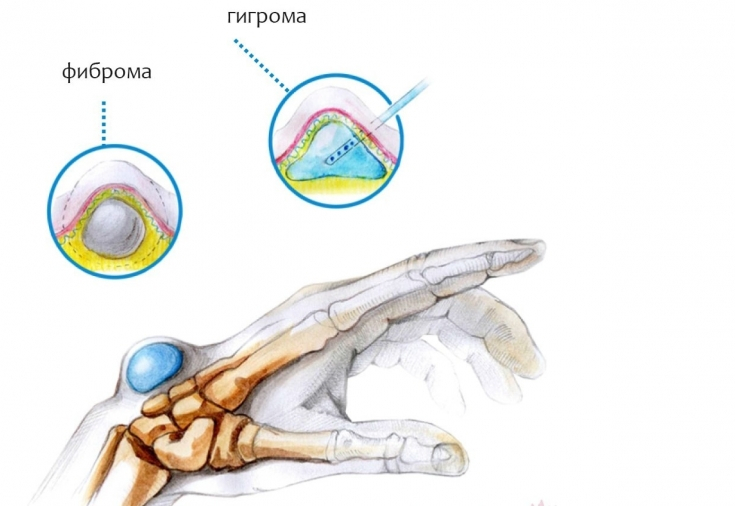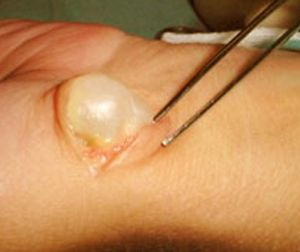Hygroma of the wrist is considered a kind of occupational disease, as it develops due to excessive stress exerted on the wrist joint due to constantly repetitive movements. Such a load is usually received by the hand of a pianist, a cook, a programmer working with a “mouse”, a tennis player and representatives of some other professions.
However, wrist hygroma can also occur for no apparent reason. Usually, the hygroma of the wrist develops gradually, and a person may not be aware of it for quite a long time, until this tumor-like formation starts to hurt. But sometimes the hygroma swells on the arm suddenly, in a couple of days, which is very scary.
Causes of carpal hygroma and main symptoms
The wrist joint is one of the most complex in the human body, since small bones of the wrist, metacarpus, and radius are combined here. All this is held together by ligaments that allow the hand to move in all directions, and these ligaments together form a kind of capsule around the wrist joint.
Follow us on Instagram!
The joint can easily move due to the synovial fluid contained in the joint bag. When there is constant physical tension or pressure in the same place of the wrist joint, the wall of the capsule becomes thinner, and the joint fluid begins to squeeze out the weakened layer. The reasons for the development of hygroma of the wrist, read more on estet-portal.com.

The thin wall of the capsule swells, rounds, and the resulting spherical formation filled with synovial fluid begins to push the tissues apart, gradually increasing in size.
Usually, the hygroma of the wrist protrudes from the back of the hand, but sometimes it can form in the place where the pulse is usually checked; most often disturbed as a cosmetic problem, but sometimes it hurts quite a lot.
When the load on the wrist joint is reduced, the hygroma of the wrist may decrease in size, even cases of its complete disappearance when the load is stopped are described.
Most often, wrist hygroma occurs due to the following reasons:
• trauma of the wrist joint;
• increased and constant loads on the hand and on the wrist joint;
• complications after operations on the hand;
• repeated wrist injuries (such as those sustained while playing tennis or golf).
Body signals: why joints crackle
Treatment of carpal hygroma and causes of possible complicationsHygroma is not prone to malignant transformations and manifests itself only as external non-aesthetic or pain in the surrounding tissues. Hygroma of the wrist is diagnosed quite easily by a dermatologist or orthopedist.
Surgical removal of the carpal hygroma seems to be the most effective treatment, since conservative methods of therapy preserve the capsular wall, which means that there is a high risk of new accumulation of fluid and recurrence of the disease.
As a rule, the removal is carried out using a laser – the skin is cut, and through a small incision, the surrounding tissues are carefully separated, the hygroma is excised, and the exit hole is sutured so that the synovial fluid does not leave the joint.

Infrared Detox Capsule: Benefits for the Body
If the operation is performed by a specialist who is well versed in hand surgery, and all the conditions of the postoperative period are met, the risk of complications in the form of re-development of hygroma of the wrist is minimal.






Add a comment